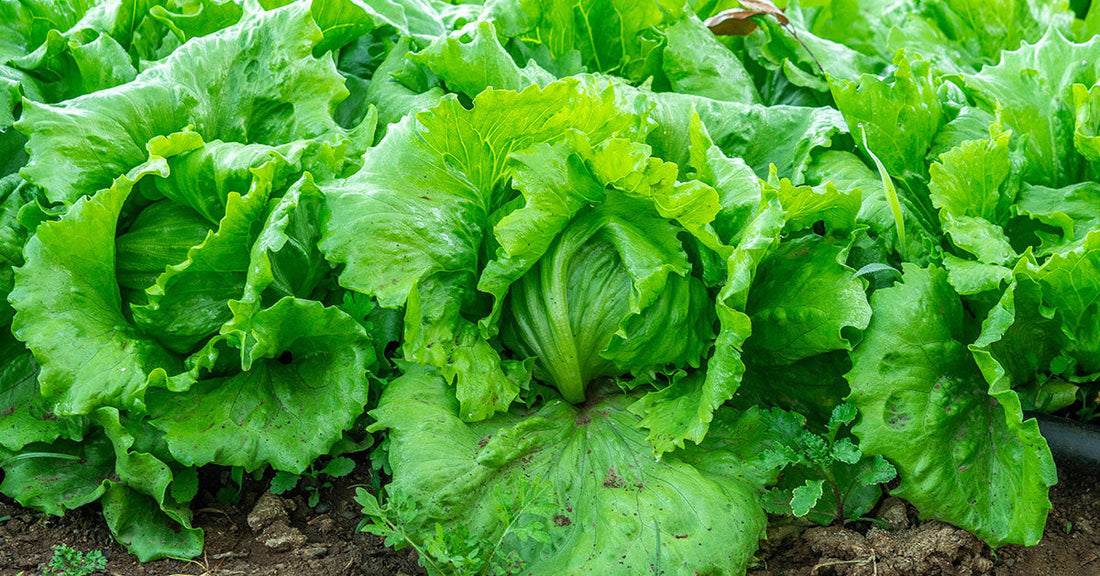
How to Grow Iceberg Lettuce from Seed
Iceberg lettuce (Lactuca sativa var. capitata) is a crisp, refreshing salad staple that is relatively easy to grow in the UK. Known for its crunchy texture and mild flavour, Iceberg lettuce thrives in cool weather, making it an excellent choice for UK gardeners. This guide will cover every step, from soil preparation to harvest, ensuring a successful crop.
Introduction to Growing Iceberg Lettuce from Seed
Iceberg lettuce is a type of head lettuce that forms tight, compact heads of crisp, pale green leaves. It is a cool-season crop that performs best in spring and early summer or in autumn. With careful planning, you can enjoy home-grown Iceberg lettuce that surpasses shop-bought varieties in taste and freshness.
Choosing the Right Variety
There are several varieties of Iceberg lettuce suited to the UK climate. Some popular choices include:
- Lakeland: A reliable, bolt-resistant variety ideal for spring and early summer sowing.
- Saladin: Known for its large, dense heads and resistance to disease.
- Webb’s Wonderful: A traditional British favourite with robust growth and excellent flavour.
Selecting a bolt-resistant variety is important for summer crops, as Iceberg lettuce is prone to bolting in warm weather.
Preparing the Growing Area
Iceberg lettuce requires well-drained, fertile soil and a location that receives full sun or partial shade.
-
Soil Preparation:
- Loosen the soil to a depth of 20-25 cm and remove any stones or debris.
- Add well-rotted compost or manure to enrich the soil and improve moisture retention.
- Aim for a soil pH of 6.0-7.0. If necessary, adjust the pH by adding lime (to raise) or sulphur (to lower).
-
Raised Beds and Containers:
- For heavy or poorly drained soil, consider growing Iceberg lettuce in raised beds.
- If using containers, select pots at least 20 cm deep and use a quality multipurpose compost.
Sowing and Planting Iceberg Lettuce
Iceberg lettuce can be grown from seed, either sown directly outdoors or started indoors for transplanting.
Sowing Outdoors
-
When to Sow:
- Early spring crops: Sow from late March to early May.
- Autumn crops: Sow in late August to early September.
-
How to Sow:
- Create shallow drills about 1 cm deep, spaced 30-35 cm apart.
- Sow seeds thinly along the drill and cover lightly with soil.
- Water gently and keep the soil consistently moist.
Starting Indoors
- When to Start: Sow seeds indoors 4-6 weeks before the last frost date, usually in February or March.
-
Process:
- Fill seed trays with moist compost and sow seeds thinly.
- Cover with a light layer of compost and place in a sunny, warm location (15-18°C).
- Transplant seedlings to larger pots once they have two sets of true leaves.
Planting Out
- Hardening Off: Gradually acclimatise seedlings to outdoor conditions by placing them outside during the day for 7-10 days.
- Spacing: Transplant seedlings 30 cm apart in rows spaced 30-40 cm apart to allow enough room for the heads to develop.
Caring for Iceberg Lettuce
Iceberg lettuce requires consistent care to ensure proper head formation and prevent bolting.
-
Watering:
- Keep the soil evenly moist but not waterlogged, as dry conditions can cause bolting.
- Water at the base of the plants to avoid wetting the leaves, which can encourage disease.
-
Feeding:
- Apply a balanced liquid fertiliser every 2-3 weeks to support healthy growth.
- Avoid over-fertilising, as excessive nitrogen can cause loose heads and poor flavour.
-
Weeding:
- Remove weeds regularly to reduce competition for nutrients and water.
- Mulch around the plants to suppress weeds and retain soil moisture.
Preventing Bolting and Pests
Iceberg lettuce is susceptible to bolting and certain pests, but with proper management, these issues can be minimised.
-
Preventing Bolting:
- Choose bolt-resistant varieties for summer sowing.
- Provide shade during hot weather to keep plants cool.
- Water consistently to reduce stress, which triggers bolting.
-
Pests and Diseases:
- Slugs and Snails: Protect young plants with organic slug pellets, copper tape, or beer traps.
- Aphids: Spray with a strong jet of water or use an organic insecticidal soap.
- Downy Mildew: Ensure good airflow around plants and avoid overhead watering.
Harvesting Iceberg Lettuce
Iceberg lettuce is ready to harvest when the heads are firm and tightly packed.
-
When to Harvest:
- Most varieties are ready 70-90 days after sowing.
- Test by gently squeezing the head; it should feel firm but not overly hard.
-
How to Harvest:
- Use a sharp knife to cut the head at the base, just above the soil line.
- Remove any damaged or outer leaves and use immediately for the freshest flavour.
-
Storage:
- Iceberg lettuce can be stored in the refrigerator for up to 10 days.
- To keep it fresh, wrap the head in a damp paper towel and place it in a perforated plastic bag.
Common Problems and Solutions
Even with proper care, Iceberg lettuce can encounter some common issues. Here’s how to address them:
- Loose Heads: Often caused by overcrowding or excessive nitrogen. Ensure proper spacing and avoid over-fertilising.
- Bitter Flavour: Usually due to bolting. Harvest heads promptly and maintain consistent watering to reduce stress.
- Rotting Leaves: Caused by poor drainage or overwatering. Improve soil drainage and water carefully at the base.
Frequently Asked Questions
Q: Can Iceberg lettuce be grown in containers?
A: Yes, it grows well in containers. Use a pot at least 20 cm deep, keep the soil moist, and provide adequate spacing.
Q: How do I prevent bolting?
A: Choose bolt-resistant varieties, provide shade during hot weather, and maintain consistent watering to reduce stress.
Q: Can I harvest individual leaves instead of the whole head?
A: Iceberg lettuce is typically harvested as a whole head, but you can pick a few outer leaves for early use while allowing the plant to continue growing.
Summary and Final Tips
Iceberg lettuce is a rewarding crop that adds freshness and crunch to salads and sandwiches. To summarise:
- Sow seeds in spring or autumn, depending on the desired harvest time.
- Choose a sunny or partially shaded location with fertile, well-drained soil.
- Water consistently, provide shade in hot weather, and choose bolt-resistant varieties to minimise bolting.
- Harvest when the heads are firm for the best flavour and texture.
For additional information, the Royal Horticultural Society (RHS) website and books like Vegetable Growing Month by Month by John Harrison provide excellent advice tailored to UK gardeners.
With proper care, you’ll enjoy fresh, crisp Iceberg lettuce straight from your garden. Happy growing!
